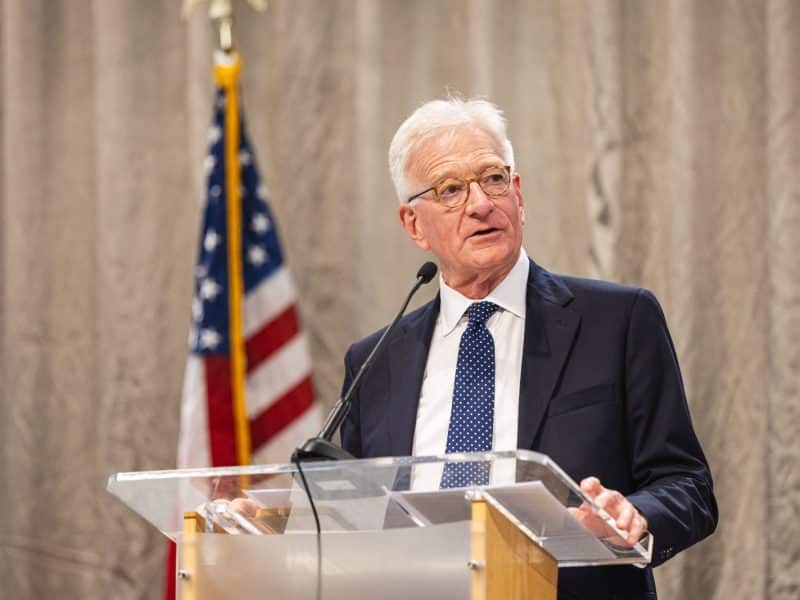Mayor David LaGrand brings personal passion to Grand Rapids’ transportation future
Newly-elected Grand Rapids Mayor David LaGrand envisions a safer, more accessible Grand Rapids, driven by his experiences as a walker, cyclist, and father.
For new Grand Rapids Mayor David LaGrand, transportation isn’t just a policy issue. It’s a deeply personal mission shaped by years of walking, biking, and advocating for accessibility as the father of a blind daughter.
The former state representative has a transformative vision for the city’s transportation system, from crosswalks to transit buses. It centers on creating a city where pedestrians, cyclists, and public transit users aren’t just accommodated but prioritized.
“For me, public transportation and alternative modes of travel are personal,” LaGrand says. “I walk daily and intend to either walk or bike to City Hall whenever possible, only taking a car if absolutely necessary. My youngest daughter is blind, so I understand firsthand how critical sidewalks and accessible transportation systems are, not just as conveniences but as lifelines.”
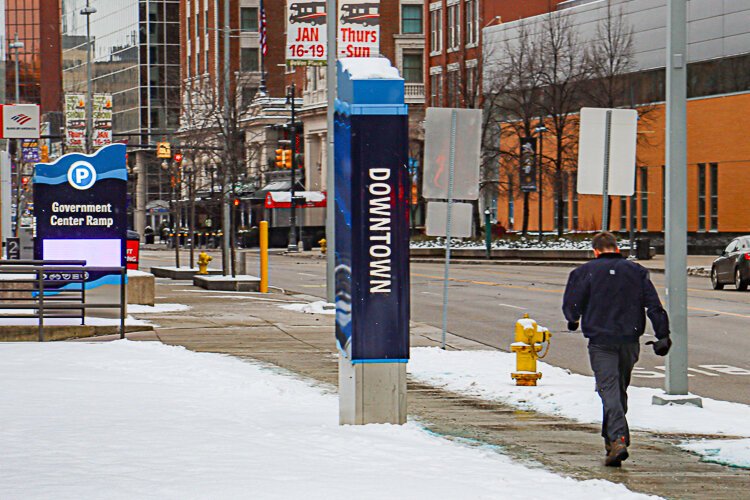
During a recent photo shoot, new Grand Rapids Mayor David LaGrand decided to ditch his car and walk to his next appointment.
LaGrand, who once used a bicycle as his primary mode of transportation around town, knows cycling’s benefits, but he also has experienced its risks. In Grand Rapids, he says, biking and walking can be dangerous because of poorly designed streets.
“There are some times when it’s safe, but far too often, it isn’t,” he says.
Accessibility often overlooked
His daughter Julia’s experience has further deepened his commitment to accessibility.
“During Michigan winters, Julia has often felt housebound because sidewalks aren’t shoveled. A world where we rely solely on individual compliance doesn’t work for people with accessibility challenges,” LaGrand said.
“If even one sidewalk is impassable, it can make an entire route inaccessible for someone in a wheelchair or for someone who is blind. We need universal snow plowing to make our city navigable for everyone.”
LaGrand’s commitment extends beyond sidewalks to the broader issue of pedestrian safety.
“Pedestrians are human beings. They should be the most important transit units,” he says. “My shoes need zero parking spots, and so does my bike. Prioritizing walkability reduces parking pressures and makes our city more livable for everyone.”
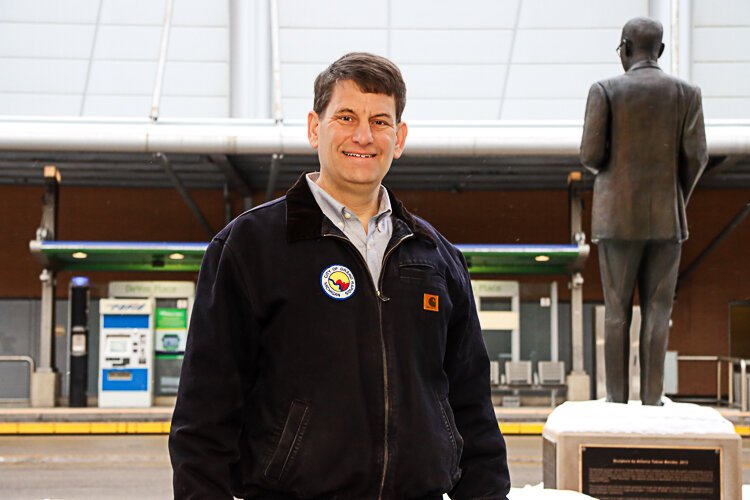
Newly-elected Grand Rapids Mayor David LaGrand is a former state representative. He has a transformative vision for the city’s transportation system, from crosswalks to transit buses.
Elevating pedestrian, cyclist safety
An important route to this goal is redesigning streets to make them safer for pedestrians and cyclists. For example, he wants to see instant-on flashers at mid-block crossings, where people naturally cross the street.
“Mid-block crossings are safer for pedestrians than walking to intersections,” he says. “We need to design streets that reflect where people actually are, not where we wish they were.”
LaGrand also wants to reduce traffic speeds.
“Speed is lethal,” he says. “If a pedestrian is hit at 35 miles per hour, there’s about a 90% chance they’ll die. At 25 miles per hour, there’s a 90% chance they’ll survive. That 10 miles per hour makes all the difference. Designing streets that prevent cars from reaching lethal speeds is critical to saving lives.”
He identified several streets in Grand Rapids that function as “unofficial highways,” where cars consistently exceed safe speeds.
“Streets like Michigan Street, Lake Michigan Drive, and Burton Street can feel like drag strips,” he says. “Slowing traffic on these streets will save lives, especially in residential areas where kids live and play.”
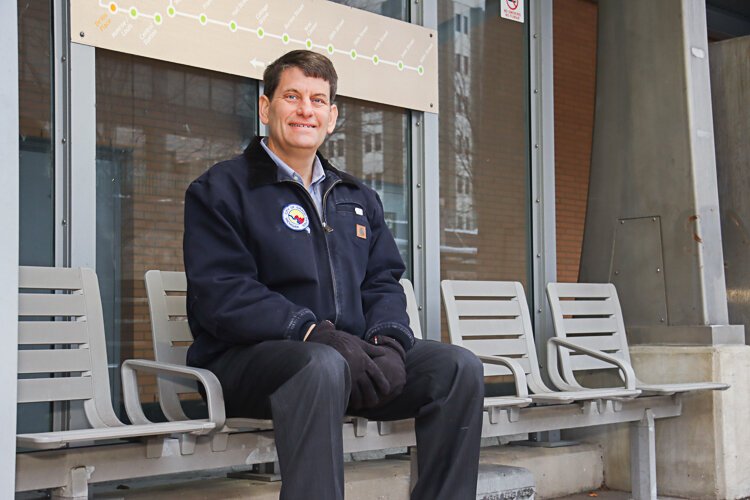
Grand Rapids’ Mayor David LaGrand’s vision for transportation centers on creating a city where pedestrians, cyclists, and public transit users aren’t just accommodated but prioritized.
He wants to see roads narrowed to slow traffic, one-way streets converted back to two-way streets, and traffic lights shifted into four-way flashing lights during off-peak hours.
“Four-way stops are safer for pedestrians because drivers instinctively yield,” he says, adding that timed lights can be frustrating and unnecessary when there’s little traffic, and converting them during low-volume times is a “win-win.”
He also advocates for long-term infrastructure improvements, from lane widths to crosswalk timing.
“So much of our road design assumes a narrow range of users, able-bodied people between 18 and 40,” he says, noting that crosswalks don’t provide enough time for people with mobility issues to cross. “But that doesn’t reflect our reality. Streets should accommodate seniors, people with disabilities, and everyone in between.”
Fresh vision for public transit
LaGrand also wants to see Grand Rapids’ public transit system evolve. As a member of The Rapid board and the official who appoints the city’s four representatives on the 14-member board, he plans to push for faster adoption of electric buses.
“Electrifying buses is one of the most impactful steps we can take for our environment,” he says. “Tailpipe emissions are the last major urban pollution issue we need to tackle, and buses are a great target because they have predictable routes and charging needs.”
He also wants to rethink whether buses need to be as large as they are.
“Not every route requires a large vehicle,” he said. “Smaller buses could be more flexible and cause less road damage. Even if the operating costs are similar, the benefits in maneuverability and reduced wear and tear on streets are worth considering.”
LaGrand believes that public transit must continually adapt to the city’s changing needs.
“Our transit system has made incredible progress over the last 20 years, but cities evolve,” he says. “As new housing developments and business hubs emerge, we need to ensure our transit system connects people to where they live and work.”
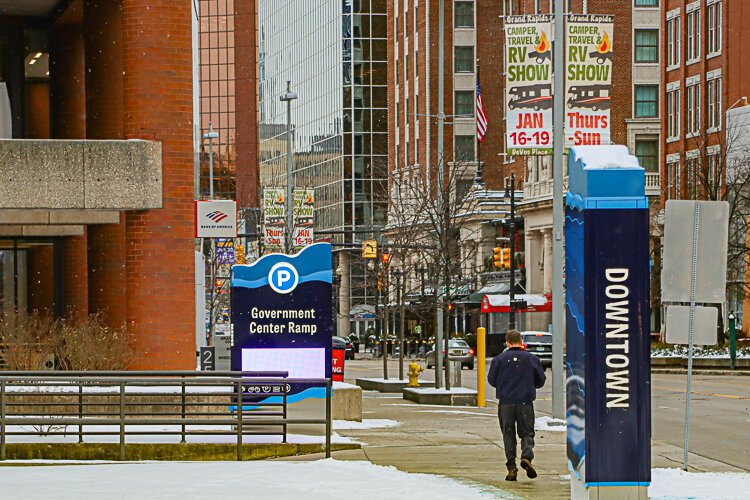
Newly elected Grand Rapids Mayor David LaGrand walks daily and intends to either walk or bike to City Hall whenever possible.
Safer streets
His passion for transportation also ties into his broader public safety goals. LaGrand is alarmed by the rising number of traffic fatalities in Grand Rapids.
“We may soon see a year where more people die from traffic fatalities than from homicides,” he says. “While murder is horrific, death is death, and traffic fatalities are preventable. Reducing them must be part of our public safety goals.”
He believes design improvements are the most effective way to reduce these tragedies.
“We can’t just rely on enforcement or hope drivers magically transform into perfect operators,” he says. “We need streets that naturally encourage safer behavior.”
LaGrand’s focus on transportation isn’t just about moving people from one place to another; it’s about having a community where all residents feel safe and valued.
“For me, this isn’t theoretical, it’s personal,” he says. “It’s about my daughter, my neighbors, and everyone who calls Grand Rapids home. Transportation isn’t just about getting from point A to point B. It’s about creating a city where everyone can thrive.”
Voices for Transit is a series that explores public transportation in Greater Grand Rapids by exploring the issues that diverse communities face, lifting up the voices of residents, employers and stakeholders.



